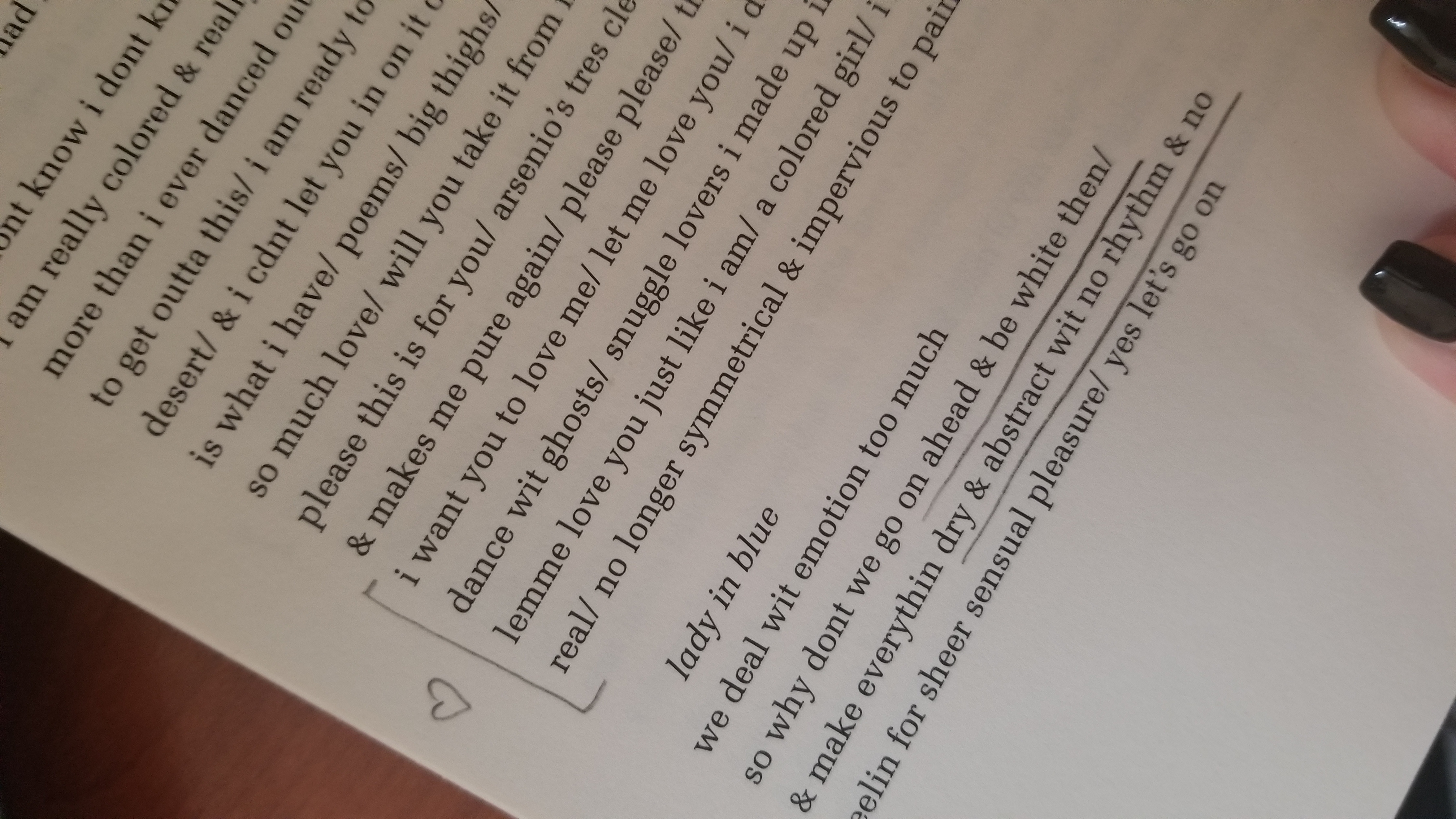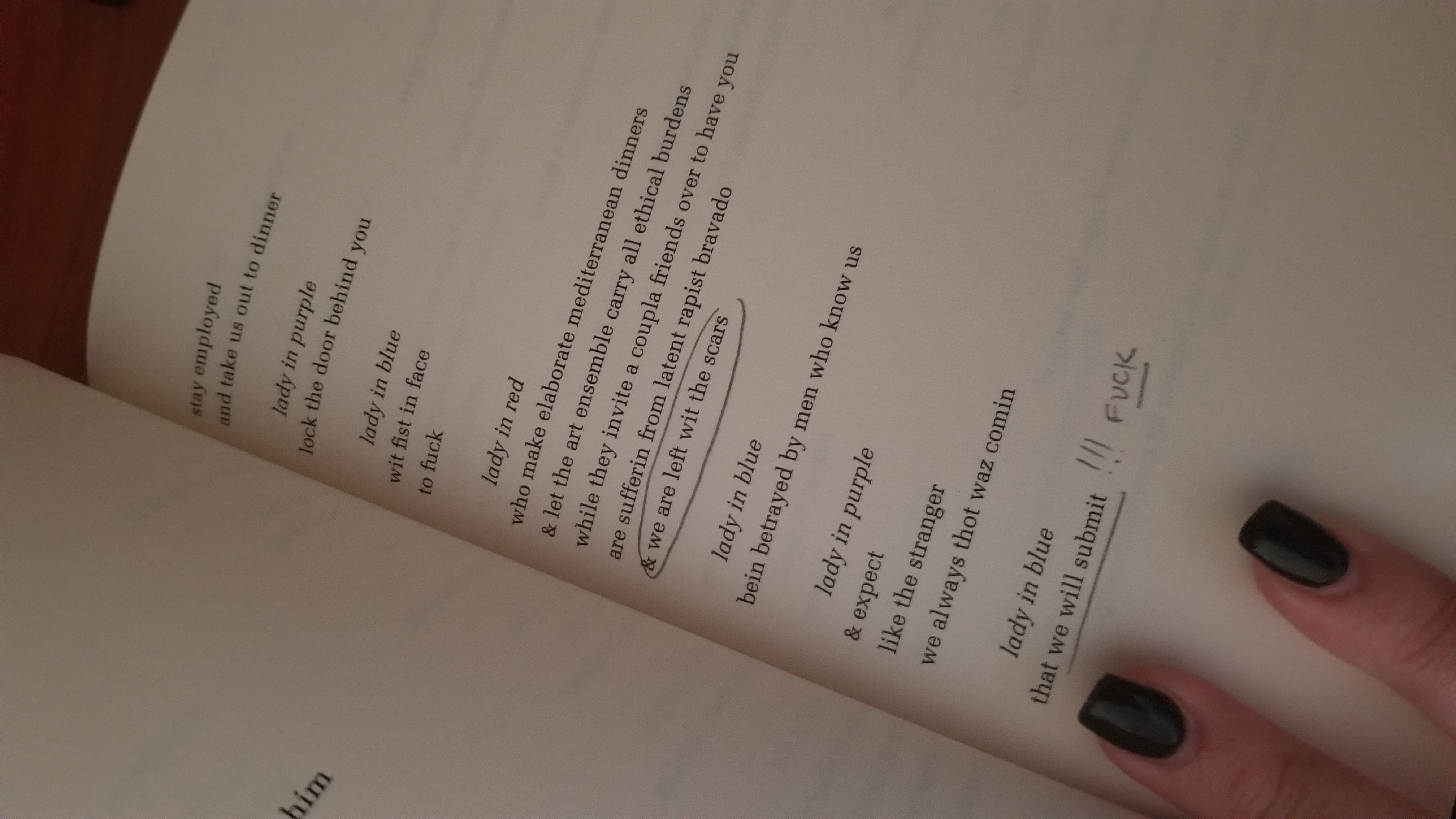As I read for coloured girls by Shange, I was saddened by the idea that I hadn’t found her before. Before, when my curling hair and español didn’t fit in my mouth, didn’t fit in my writing, in my thoughts. When my own identity alienated me from my conceived self, a self that was white-passing (at least in South Jamaica, where white was just skin), and desired a white family and white traditions. As I read Shange, 21 and no longer desiring a white

identity, but desperately clinging to the aspects of my identity that are deeply Latina and give me culture, sabor at Barnard, I am deeply moved by her words. I annotated her work, as pictured, expressing the way my heart stopped when her stanzas did, or when it left me full of something unrecognizable – was it love for myself, or the people I identify with? Shange’s writing is not just feminist writing, it is not just transnational and globalized, it is not just about culture and music and movement, it is about humanity as its core. It is about empathy and love and passion, pain, and healing and for these reasons, for the shared experiences Shange expresses in for coloured girls¸ I am able to tie myself to a story that is not necessarily, explicitly my own.
we deal wit emotion too much
so why don’t we go on ahead & be white then/
& make everythin dry & abstract wit no rhythm & no
reelin for sheer sensual pleasure/ yes let’s go on & be white. (58-59)
— and I wanted to be white, for so long, because, as Shange expresses, maybe being white means not having to address the idea of the woman of color that is too sensitive, too concerned about herself. Maybe this was a way to remove myself from myself? But as Shange states, “bein alive & bein a woman & bein colored is a metaphysical dilemma / i havent conquered yet” (59). Haven’t conquered because I refuse to view myself as separate, fragmented pieces, at least not anymore.
Now, as I read other literary works, I search for myself. I don’t search for a regurgitated image of what others think I am, because I am too complicated, too sanctified, too magic, too music (60-61) to be one thing.
El español de Shange, the reference to the music of my childhood, merengue, immediately reminded me of Fefita’s performance of Vamo Hablar Ingles; watching as a woman dominate a stage, surrounded by music and movement and culture / my culture adopted a new meaning. A song that only in asserting to “hablar ingles” is adopting the same transnational, global connections that Shange evokes, and in a sense, it’s all tied together.





